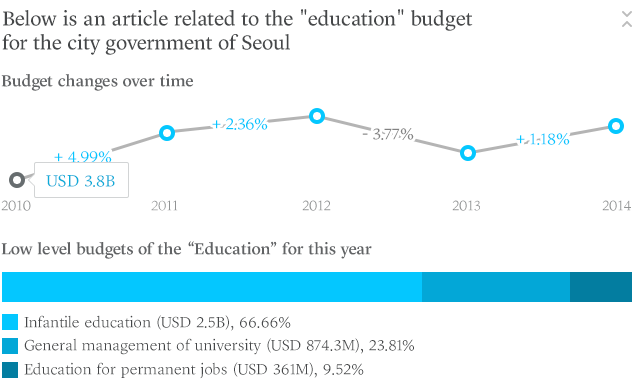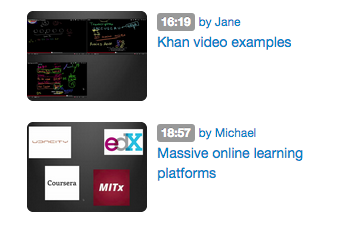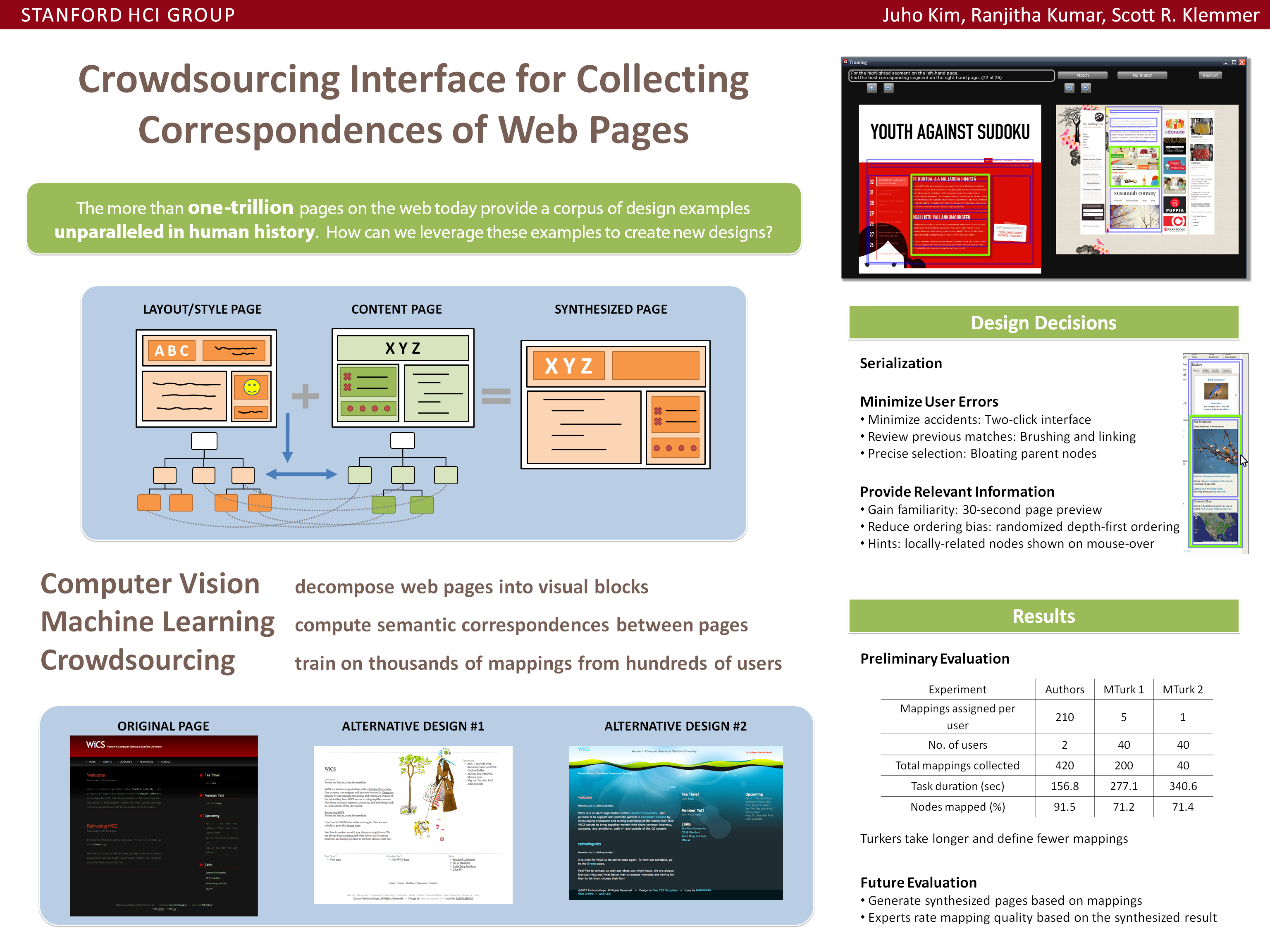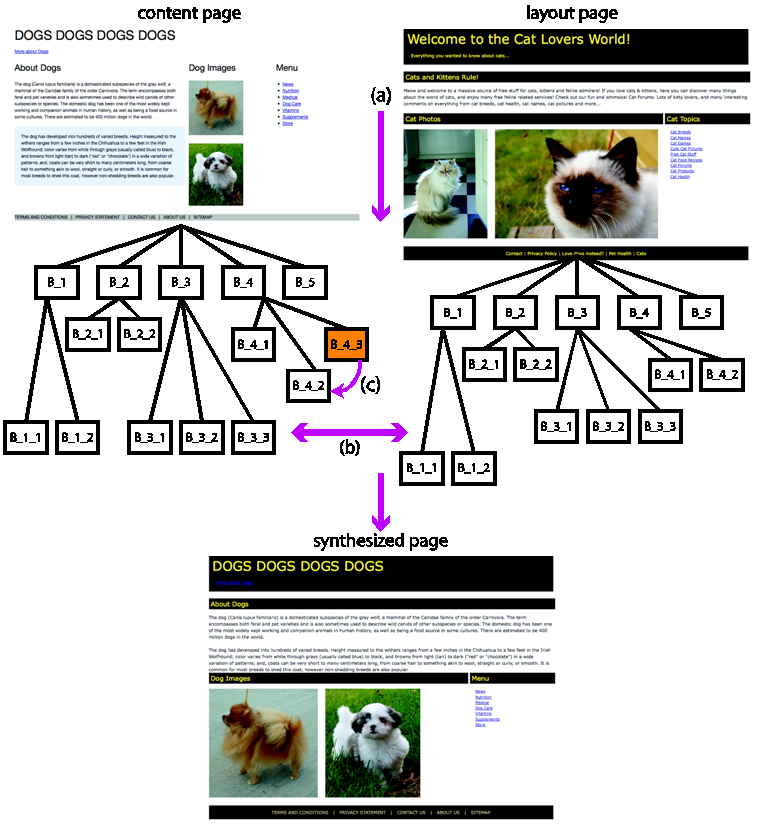Research Projects ()
Filter: all
hci
web
learning
video
crowdsourcing
social
creativity
current
past
RIMES: Multimedia Exercises for Video
RIMES allows teachers to embed interactive multimedia exercises within online lecture videos. Students can record audio, video, and ink-based answeers, and teachers can review the responses.
Crowdy: Learnersourced Video Summary
Crowdy is a crowd-powered video learning interface, where learners collaboratively add interactive labels to videos to enhance the content.
LectureScape: Data-Driven Video Interaction
LectureScape leverages thousands of other learners' interaction history with lecture videos to add 2D, non-linear timeline, enhanced in-video search, and visual highlights.
BudgetWiser: Fact-Based Budget Discussion
BudgetWiser promotes public discussions around a government budget via collaborative fact-checking and tagging, interactive visualization, and contextual budget information extraction in a news article.
Content-Aware Kinetic Scrolling
Our novel scrolling technique dynamically applies kinetic friction around points of high interest within a web page while scrolling on a touchscreen device.
ToolScape: Enhancing How-to Videos
ToolScape captures work-in-progress images and step-by-step information inside video tutorials to help learn how-to skills in any domain.
It features workflows to capture annotations from crowd workers, or learners watching the same video.
Cobi: Communitysourcing Conference Scheduling
Cobi integrates community process, constraint-solving intelligence, and end-user interface to help in the schedule process of large conferences.
TalkScape: Lecture Annotation Tool
How can we capture, interact with, and discuss important moments in a presentation or lecture video? TalkScape supports taking annotated snapshots, visualizing an outline, and deep-linking between the video and external resources.
Photoshop with Friends: A Synchronous Learning Community for Graphic Design
Abstract:
Photoshop with Friends is an online community of
learners exchanging just-in-time help on graphic design
tasks. The system attempts to provide an interactive,
visual, context-aware, and personalized mode of learning.
Developed as a Facebook application, Photoshop with
Friends allows users to help each other in live sessions,
with built-in screen sharing, recording, and voice chat
support. Major design decisions are guided by two
laboratory studies that identied challenges in learning
graphic design skills on the web.
ReadWriter: An In-Place Task Automation and Feedback Support Tool for Blogging
Abstract:
ReadWriter is a novel blogging interface
that enables task automation and offers on-demand writing
feedback. Bloggers can express any writing-related help
requests in natural language inside double brackets. Read-
Writer interprets a blogger's requests and assigns them to a
diverse group of contributors: software search agents, an
anonymous crowd, the blogger's social connections, and
readers. The entire cycle of creating a request, checking
status, reviewing results, and applying to a draft occurs
inside the blogging interface. Design goals are to help writers
maintain flow by automatically managing housekeeping
tasks, and to engage readers earlier on in the writing process.
Analysis of collected requests identified distinct categories
of tasks people expect from the system. Five bloggers
in the lab study found the tool easy to learn and use,
and exhibited various usage patterns during a writing task.
Crowdsourcing Interface for Collecting Correspondences of Web Pages
Abstract: One challenge in building a web design tool that attempts to leverage examples is gathering design alternatives and providing mappings between web page elements. We present a crowdsourcing interface to collect user-generated correspondences between two web pages. Our iterative refinement of the interface was guided by three main design principles: modularize the task, minimize user errors, and provide relevant information. As an initial experiment, we collected fifteen web pages with diverse style and layout, and deployed the interface on Amazon's Mechanical Turk. Preliminary data analysis shows that Turkers take longer than experts and define fewer mappings in general. Further evaluation and experiments with different types of pages will identify directions for a web design tool that enables the use of any web page as a design template.
Video:
Retargeting Web Page Content
Abstract: We present a novel technique for automatically retargeting content from one web page onto the layout of another. Web pages are decomposed into their perceptual hierarchical representations. We then use a structured-prediction algorithm to learn reasonable mappings between the perceptual trees. Using the mappings, we are able to merge the content of one page with the layout of another.
Interactive Evolution of Topic Maps
Abstract: This paper proposes interactive evolution of topic maps that can suggest new and creative knowledge. Interactive genetic algorithm is applied into topic maps, accepting human evaluation on feasibility of intermediate topic maps. In the proposed system, automated neural network raters are used in order to prevent user fatigue problem. Unlike traditional domains where convergence is valued, this system focuses on maintaining diversity in population, since creativity rather than optimization is needed. Experimental results show that automatic raters perform worse than humans, easily falling into over-fitting problem. Further work can improve the quality of generated topic maps by accepting complex expressions about the search space and preventing over-convergence.













